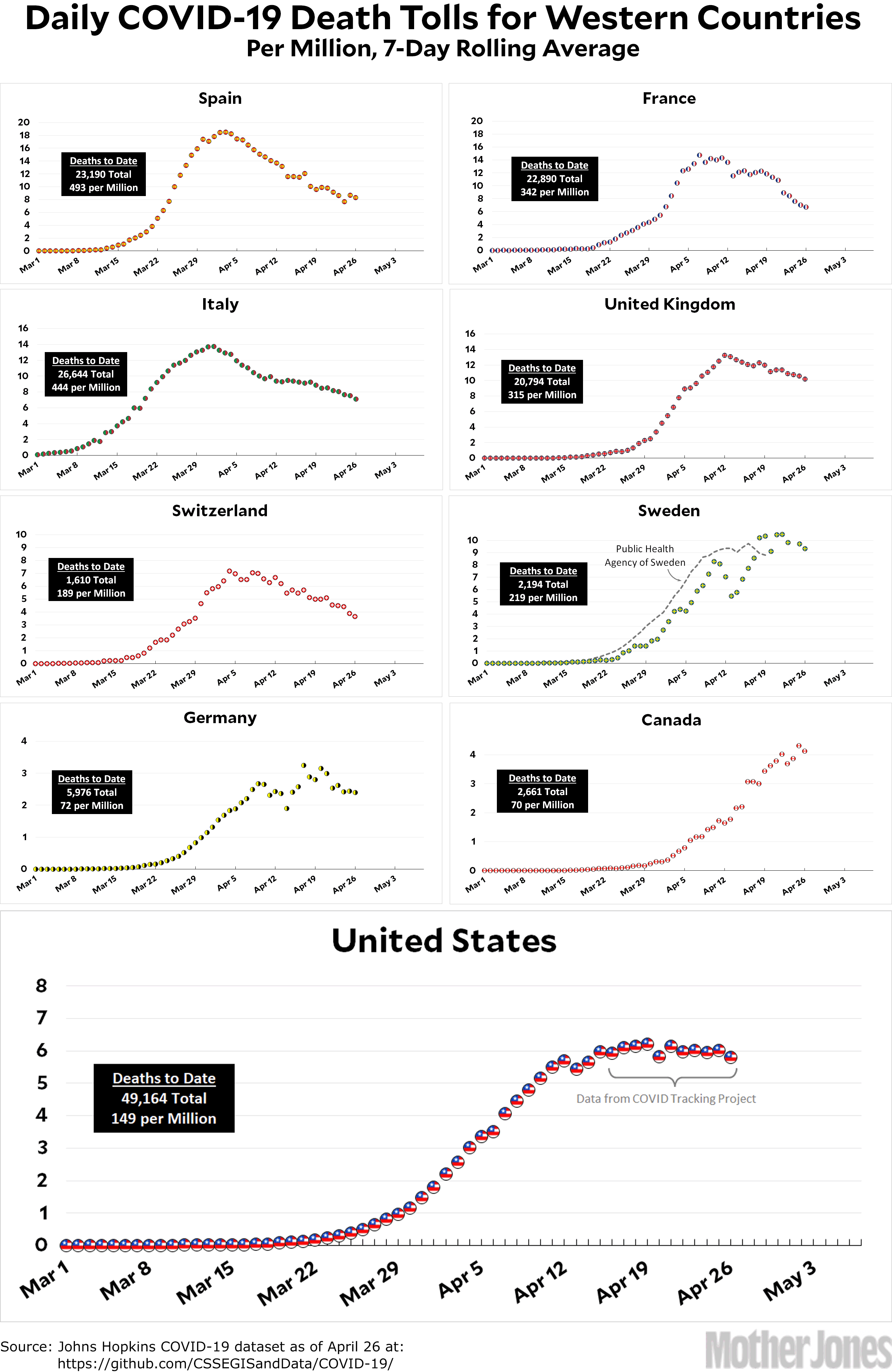Here’s the coronavirus death toll through April 26. The question of the day is: Why am I using data from the COVID Tracking Project for recent US death tolls? What’s wrong with the Johns Hopkins data?
Nothing, really. But here’s the thing: everyone’s mortality data is probably wrong. Evidence from analysis of excess deaths—that is, the number of deaths each day this year compared to the same day last year—suggests that we’re counting COVID-19 deaths wrong. The actual death toll is probably 50 percent higher than the official numbers. Maybe more.
But that doesn’t matter too much when you’re looking at trendlines. As long as the counting method is wrong in a consistent way, you’re OK. Unfortunately, a couple of weeks ago New York City decided to adopt a new counting procedure and they suddenly added 3,700 new COVID-19 deaths to their previous toll. This wasn’t because more people had actually died. It was solely because they changed the way they count.
If you use the new number, you get a big, artificial spike in the overall US number that doesn’t represent anything real. So I decided that in order to keep the trendlines readable, I’d use the overall number from the COVID Tracking Project, which doesn’t include New York’s spike. That’s why my number is different from the one you see on the news every day.
The raw data from Johns Hopkins is here. The COVID Tracking Project is here. The Public Health Agency of Sweden is here.














